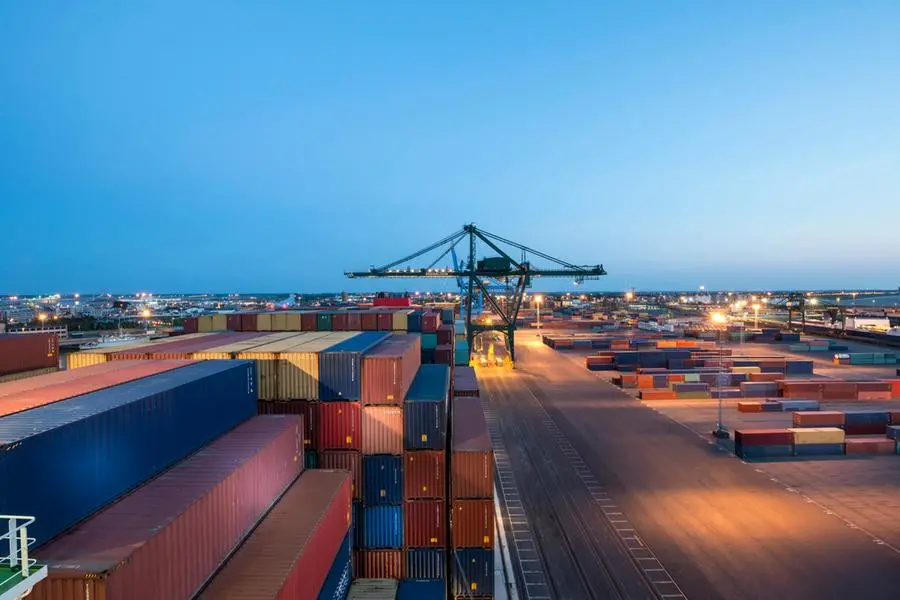
Compared to the EU and Asia, East Africa trades more with other African nations
The member states of the East African Community (EAC) are trading more with each other and with other African nations, while reducing their trade with Europe, Asia, and other regions of the world. This is forming the intra-African trade dream, which is expected to improve livelihoods and commerce throughout the continent.
According to the most recent figures released by the EAC Secretariat, the seven nations in the area (as of last year) boosted their commerce with the rest of Africa by $584.6 million to $4.3 billion in the fourth quarter of 2023, a 14% increase over the same period in 2022.
In the fourth quarter of the previous year, cross-border trade in the region increased by 12 percent, from $2.6 billion to $2.9 billion, indicating a growth in trade throughout the year.
Intra-EAC trade reached a record high of $3.2 billion during the third quarter, up 20% over the previous year. In a similar vein, commerce with the remainder of Africa surpassed $5 billion for the first time in the previous two years.
However, the trade between the region and the countries of the European Union (EU), which has historically made up around 10% of the EAC’s overall trade, decreased by 14%, from $2.04 billion in the three months leading up to December 2022 to $1.7 billion in the final quarter of 2023.
At a time when countries are striving for wider implementation of the African Continental Free Trade Area—which is expected to raise some 65 million Africans out of extreme poverty—this is an indication of improving trade integration on the continent.
Belgium is one of the top EAC partners that had a steep reduction in trade with the area; in Quarter 4, 2023, commerce fell by 45 percent to $188 million from $263 million the year before.
As the tenth-largest trading partner in East Africa, the United States had a 19% decline in its commerce with the region from $200 million in the October–December 2022 period to $161 million in the previous year.
Trade with the region decreased by 12%, 2%, and 23% for Germany, Italy, and Switzerland, respectively. Germany was knocked out of the top ten trading partners in the region as a result of the decline.
All of these nations had a general decrease in imports and exports, with the exception of Germany, which during that time purchased a greater amount of East African commodities while selling a significantly smaller amount of its own goods in the area.
Trade between EAC and major Asian producers, including Pakistan, Malaysia, China, Vietnam, Indonesia, and Korea, showed a similar pattern.
East African countries’ top supplier, China, saw an improvement in imports, but exports to the Asian superpower fell by 12%, suggesting that local companies are moving their operations to other markets.
During that period, exports to Malaysia, the fourth largest market for commodities from East Africa, had a 17 percent decline, despite a 47 percent increase in imports.
Amidst the downturn in trade with the US, Europe, and Asia, a few African nations have become crucial trading partners for the EAC.
For example, commerce between East Africa and the Economic Community of West African States (Ecowas) increased to $199.6 million from October to December of previous year, more than trebling to $61 million from 2022. This increase increased the region’s proportion of EAC’s overall trade from 0.3 percent to 1 percent.
The era also witnessed an improvement in trade with the Southern African Development Community (SADC), which increased by 40% to 2.7 billion, increasing the region’s proportion of EAC trade from 9.8% to 12.8%.
With commerce between them jumping 26% to $838 million from $664 million in the final quarter of 2022, South Africa is the EAC members’ top trading partner on the continent.
A stronger political determination to remove trade obstacles within the area and increase intra-African commerce, according to John Bosco Kalisa, CEO of the East African Business Council, will lead to an improvement in intra-African trade at the expense of Europe, Asia, and the US.
“The global shocks—Covid-19, the conflict in Russia and Ukraine, and the disruptions in the Middle East—have taught us a valuable lesson that has affected our trade and investments,” Mr. Kalisa said to The EastAfrican.
“Under the Buy East Africa Build East Africa initiative, one shock absorber is to build regional production capabilities, as well as at national levels.”
The leader of the regional business sector lobby, Mr. Kalisa, contends that governments in the area are working together to support regional value chains and remove trade obstacles with countries throughout the continent.
He explained, “That’s why we can see that trade within the continent is growing rather than trade with the EU or China.”
Businesses in the area have historically been held accountable for abusing preferential trade arrangements with nations outside of the continent rather than free trade accords inside their own regional trading blocs.
According to a study conducted last year by the Common Market for Eastern and Southern Africa (Comesa) and the United Nations Conference on Trade and Development (UNCTAD), African nations typically utilize free trade agreements (FTAs) with the US, Canada, the EU, and Japan more than they do with FTAs within their own regional economic communities.
All Categories
Recent Posts
Tags
+13162306000
zoneyetu@yahoo.com



